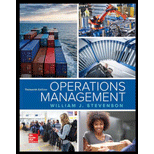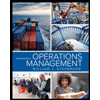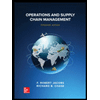
Concept explainers
CASE: The Case of the Mexican crazy quilt
1. “The mission of the project which you will head is to get our new Mexican subsidiary ready for takeover by Mexican managers. My hope is that you will be able to do this in about two years,” explained Robert Linderman, president of Linderman Industries, Inc., to Carl Conway, newly appointed manager for “Operation Mexicano.” Conway had been hired specifically for this assignment because of his experience in managing large defense projects in the aerospace industry.
“The first thing that I will have to do is put a project team together,” said Conway. “I imagine that you have in mind my drawing people from the functional divisions.”
“Yes, I have already sent memoranda to the division managers informing them that you will be asking for some of their key people to work under you for about two years,” said Linderman. “In addition, I have advised them to be prepared to process work orders from Operation Mexicano with the personnel and equipment of their organizations. Later on in the project’s life, you will begin to get Mexican personnel, both managers and technicians, into your organization. These people will have Mexican supervisors, but until the mission is accomplished, they also will report to you. I will have to admit that you are going to have some complex authority relationships, especially as you personally will be responsible to the president of the subsidiary, Felix Delgado, as well as to me.”
Conway began to make his plans for the project team. The plant building was available and empty in Mexico City, and it was important to get equipment purchased and installed as soon as possible. A plant layout would have to be prepared, but before that could be done there would have to be a manufacturing plan. Therefore, he needed to recruit an industrial engineer, a production planner, and an equipment buyer. They, in turn, would have to build their own staffs.
He made an appointment with Sam Sargis, corporate manager of industrial engineering. “I have had a preliminary talk with Bob Cates about his joining Operation Mexicano, and he is quite interested,” Carl said. “Will you release him to me?”
“Why, I’m grooming Cates to take over my job when I retire,” replied Sargis. “He is my best man. Let me pick someone else for you, or better still, you just tell me what industrial engineering work you want done, and I will have it done for you.”
“Sorry, I want Cates,” said Carl firmly. “And besides, you are not due to retire for five years. This will be good experience for him.”
For production planning, Carl had in mind Bert Mill, an older man with extensive experience in managing production operations, but Mill rejected his offer. “I talked it over with my wife,” he said, “and we feel that at my age I shouldn’t take a chance on not having a job to come back to when Operation Mexicano is finished.”
Carl next talked to Emil Banowetz, who was assistant to Jim Burke, the vice president for manufacturing, and Banowetz decided that he would like to join the project team. However, Burke told Conway that if Banowetz were forcibly taken away from him, he would give Mr. Linderman his resignation, so Carl decided to back down. He finally accepted a man that Burke recommended.
Filling the equipment buyer’s slot was easy. The director of procurement phoned Carl and said that a senior buyer, Humberto Guzman, had requested permission to ask for the assignment, and that he strongly recommended him. Guzman has been purchasing agent for a large mining company in Mexico for about 10 years.
Carl had about the same experiences in getting the people he wanted for the functions of engineering, quality control, cost, marketing, and advertising as he did for the first three positions; in other words, he won some confrontations with the division managers and lost some. For personnel, he got Dr. Juan Perez, who was slated to be personnel director of the subsidiary company, to affiliate temporarily with the project team.
The first brush that Project Mexicano had in getting a functional division to do work for it came when Carl’s engineering man, Frank Fong, reported to him that the engineering vice president, who was formerly Fong’s boss, refused to authorize top priority to the changing of dimensions in the production drawings to the metric system. Carl had to take this issue to Linderman, who ruled in his favor. The defeated vice president, of course, did not take kindly to the decision.
The next incident revolved around Carl’s desire to have a pilot run of products made with metric measurements for shipment to Mexico. The purpose was to test the market acceptance of the Linderman articles. Jim Burke stated flatly that there was no way that his production workers could be trained to work with metric drawings. Carl quickly saw that this was an issue that he was not going to win, so he had his buyer, Guzman, work with the newly appointed manufacturing manager for the subsidiary in getting a run of the products subcontracted in Mexico City.
Bob Cates made a special trip from Mexico City to present Carl with an interesting problem. The Mexican industrial engineer, whom Bob was supposed to be training, had his own ideas about plant layout. When they differed from Bob’s as they usually did, he would take his complaint directly to Felix Delgado, the president of the Mexican subsidiary. Because Delgado’s competence was primarily in finance, he would not know how to decide the argument and would simply table it. Carl took examples of some of the disagreements to Bob’s former boss, Sam Sargis, who quite unexpectedly ruled against Bob’s proposed methods. Carl saw that there was bad feeling by Sargis against Bob for leaving his department, which boded ill for Bob’s return. To solve the immediate problem, however, Carl asked Dr. Perez to try to reconcile the situation in Mexico City.
Despite these problems, and many more of a similar nature, Project Mexicano was successful, and the transition to Mexican management was made in just a little over two years. By a curious twist, through Dr. Perez’s intercession Felix Delgado became very impressed by Bob Cates and convinced him to accept the job of director of industrial engineering for the Mexican company. Humberto Guzman also stayed on to head the procurement operation.
Other members of the project team were not so fortunate. Linderman Industries was laying off personnel when the project ended, and only the project production man was able to get a job in the company at as high a level as the one he had when he joined the team. The cost expert elected to leave Linderman because he said the glamour of Project Mexicano had spoiled him for any routine job.
Carl Conway had a difficult decision of his own to make. Robert Linderman said that he was extremely pleased with his performance and that something good would open up in the company for him soon. In the meantime, there was a staff assignment available for him. Carl had seen enough project managers in the aerospace industry who had figuratively rotted on staff assignments when their projects were completed to be somewhat wary.
Was Linderman Industries’ adoption of project organization an appropriate one for getting the Mexican subsidiary started?
Source: Clayton Reeser and Marvin Loper, Management: The Key to Organizational Effectiveness, rev. ed. Copyright © 1978.
Want to see the full answer?
Check out a sample textbook solution
Chapter 17 Solutions
Operations Management (Comp. Instructor's Edition)
- Do you feel there is anything positive about rework?arrow_forwardDo you think technology can achieve faster setup times? How would it be implemented in the hospital workforce?arrow_forwardIn your experience or opinion, do you think process changes like organizing workspaces make a bigger difference, or is investing in technology usually the better solution for faster setups?arrow_forward
- Have you seen rework done in your business, and what was done to prevent that from occurring again?arrow_forwardResearch a company different than case studies examined and search the internet and find an example of a business that had to rework a process. How was the organization affected to rework a process in order to restore a good flow unit? Did rework hurt a process or improve the organization's operational efficiency? • Note: Include a reference with supportive citations in the discussion reply in your post.arrow_forwardSetup time is very important in affecting a process and the capacity of a process. How do you reduce setup time? Give examples of reducing setup time. Please Provide a referenecearrow_forward
- Do you think TPS was successful? If so, how? Are there other companies that have used TPS? If so, give examples. Please provide a referencearrow_forwardGiven the significant impact on finances, production timelines, and even equipment functionality, as you pointed out, what do you believe is the most effective single strategy a company can implement to significantly reduce the occurrence of rework within their operations?arrow_forwardDurban woman, Nombulelo Mkumla, took to social media last week to share how she discovered the rodent.In a lengthy Facebook post, she said she purchased the loaf of bread from a local shop after work on August 27.For the next days, Mkumla proceeded to use slices of bread from the load to make toast."Then, on the morning of August 31, I took the bread out of the fridge to make toast and noticed something disgusting andscary. I took a picture and sent it to my friends, and one of them said, 'Yi mpuku leyo tshomi' [That's a rat friend]“."I was in denial and suggested it might be something else, but the rat scenario made sense - it's possible the rat got into thebread at the factory, and no one noticed," Mkumla said.She went back to the shop she'd bought the bread from and was told to lay a complaint directly with the supplier.She sent an email with a video and photographs of the bread.Mkumla said she was later contacted by a man from Sasko who apologised for the incident.According to…arrow_forward
- PepsiCo South Africa says the incident where a woman discovered part of a rodent in her loaf of bread, is anisolated occurrence.Durban woman, Nombulelo Mkumla, took to social media last week to share how she discovered the rodent.In a lengthy Facebook post, she said she purchased the loaf of bread from a local shop after work on August 27.For the next days, Mkumla proceeded to use slices of bread from the load to make toast."Then, on the morning of August 31, I took the bread out of the fridge to make toast and noticed something disgusting andscary. I took a picture and sent it to my friends, and one of them said, 'Yi mpuku leyo tshomi' [That's a rat friend]“."I was in denial and suggested it might be something else, but the rat scenario made sense - it's possible the rat got into thebread at the factory, and no one noticed," Mkumla said.She went back to the shop she'd bought the bread from and was told to lay a complaint directly with the supplier.She sent an email with a video and…arrow_forwardDurban woman, Nombulelo Mkumla, took to social media last week to share how she discovered the rodent.In a lengthy Facebook post, she said she purchased the loaf of bread from a local shop after work on August 27.For the next days, Mkumla proceeded to use slices of bread from the load to make toast."Then, on the morning of August 31, I took the bread out of the fridge to make toast and noticed something disgusting andscary. I took a picture and sent it to my friends, and one of them said, 'Yi mpuku leyo tshomi' [That's a rat friend]“."I was in denial and suggested it might be something else, but the rat scenario made sense - it's possible the rat got into thebread at the factory, and no one noticed," Mkumla said.She went back to the shop she'd bought the bread from and was told to lay a complaint directly with the supplier.She sent an email with a video and photographs of the bread.Mkumla said she was later contacted by a man from Sasko who apologised for the incident.According to…arrow_forwardRead the project statement and answer ALL of the questions that follow PROJECT STATEMENT The African Integrated High-Speed Railway Network (AIHSRN). African nations are preparing to invest billions in a significant overhaul of their rail infrastructure as part of an ambitious plan for the continent. One of the key projects underway is the African Integrated High-Speed Railway Network (AIHSRN), which aims to connect Africa's capital cities and major commercial centres with a high-speed railway network to enhance continental trade and competition. This network will span 2,000 km (1,243 miles) and connect 60 cities, including Nairobi, Lagos, Cairo, and Dakar. It will improve access to essential markets, enhance economic cooperation, and encourage regional collaboration. The plan is poised to revolutionise intra-African trade by reducing travel times and lowering transportation costs, making trade between African nations more competitive. The trains will be capable of reaching speeds of up…arrow_forward
 Practical Management ScienceOperations ManagementISBN:9781337406659Author:WINSTON, Wayne L.Publisher:Cengage,
Practical Management ScienceOperations ManagementISBN:9781337406659Author:WINSTON, Wayne L.Publisher:Cengage, Operations ManagementOperations ManagementISBN:9781259667473Author:William J StevensonPublisher:McGraw-Hill Education
Operations ManagementOperations ManagementISBN:9781259667473Author:William J StevensonPublisher:McGraw-Hill Education Operations and Supply Chain Management (Mcgraw-hi...Operations ManagementISBN:9781259666100Author:F. Robert Jacobs, Richard B ChasePublisher:McGraw-Hill Education
Operations and Supply Chain Management (Mcgraw-hi...Operations ManagementISBN:9781259666100Author:F. Robert Jacobs, Richard B ChasePublisher:McGraw-Hill Education
 Purchasing and Supply Chain ManagementOperations ManagementISBN:9781285869681Author:Robert M. Monczka, Robert B. Handfield, Larry C. Giunipero, James L. PattersonPublisher:Cengage Learning
Purchasing and Supply Chain ManagementOperations ManagementISBN:9781285869681Author:Robert M. Monczka, Robert B. Handfield, Larry C. Giunipero, James L. PattersonPublisher:Cengage Learning Production and Operations Analysis, Seventh Editi...Operations ManagementISBN:9781478623069Author:Steven Nahmias, Tava Lennon OlsenPublisher:Waveland Press, Inc.
Production and Operations Analysis, Seventh Editi...Operations ManagementISBN:9781478623069Author:Steven Nahmias, Tava Lennon OlsenPublisher:Waveland Press, Inc.





